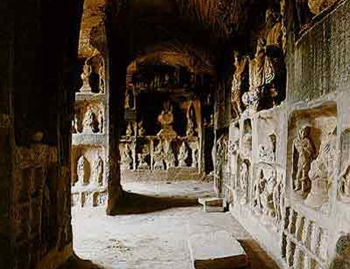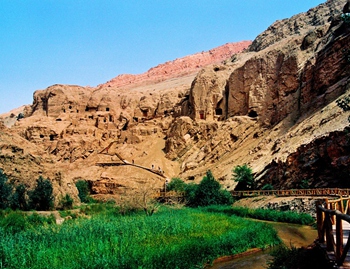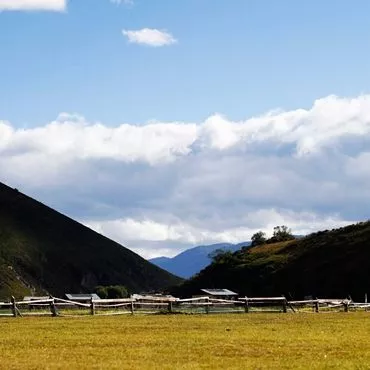Bizaklik Thousand Buddha Caves
The Bizaklik Thousand Buddha Caves, 48 kilometers northeast of the Turpan urban area, are located in the Flaming Mountains' MuTou valley. As Buddhism was the first religion from abroad introduced to this area, Xinjiang witnessed the earliest development of Buddhist cave art in China. Soon after the religion's establishment in the region, Turpan became the Buddhist center on the Silk Road owing to its geographic location. Among the Buddhist caves found in Turpan, Bizalkik Thousand Buddha Caves are considered most valuable.


They were called the ningrong grottoes in the Tang Dynasty. There are 77 numbered grottoes, about 40 of which still have murals in them. The group of grottoes in Bizaklik, with a total of 1,200 square meters of murals, has the most grottoes, most diversified architectural styles and the richest mural content in the Turpan area. The oldest grottoes were hewn in the period of qushi gaochang. From the Tang Dynasty in the thirteenth century, it was an important Buddhist gathering place. Its most prosperous period was under the reign of the xizhou huigu government, which built the royal temple of the king of huigu on this site. Most of the existing grottoes were extended or reconstructed during the huigu period.
Bizaklik Caves was the royal temple of Huihu (the predecessor of today's Uygur) State and the existing caves were enlarged or renovated during that time. The murals take us back to the ancient Huihu State, where we can see the King and Queen and people from all walks of life. The inscriptions, written in ancient Uygur, Chinese and other languages, provide authentic reference for valuable historic research.
The most exceptionally rare mural topics in Bizaklik Caves are found in Caves No.16 and 17. Cave No.16 depicts a musician playing Xiao Hu Lei-- a lute-like instrument originating from southern China's Yunnan province. This strengthens the belief that cultural exchange between northern and southern China was unprecedented during Tang Dynasty.
In addition to the murals and inscriptions, a piece of gold foil wrapping paper found at the caves is also intriguing. A stamp on it revealed the address of the shop on the south side of Tiahelou Street, Hangzhou, Zhejiang of Song Dynasty. It also advised clients to examine their goods carefully before purchase to avoid being cheated. As an apparent piece of advertisement, the foil shows that Gaochang Huihu kept close economic ties with Song Dynasty as the trade extended as far as to the East China Sea.













